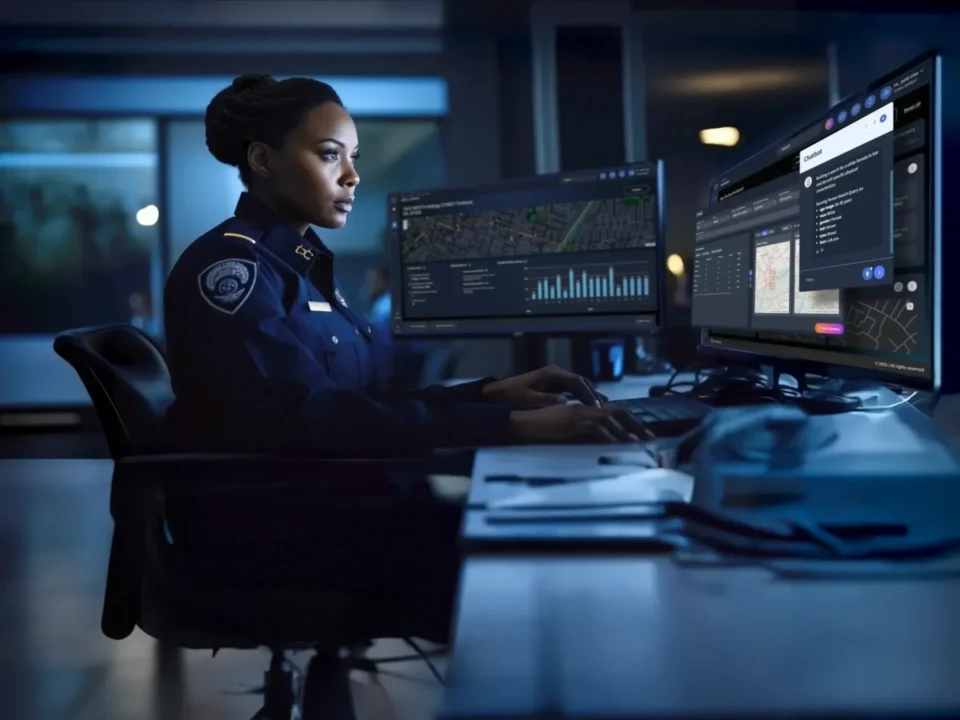The Pueblo Police Department (PPD) activated ShotSpotter® in February 2024, initially covering three square miles and expanding to six square miles in March 2025. Within the first 14 months, ShotSpotter alerts enabled officers to save 21 lives via rapid response and recover over 2,300 shell casings, which coincided with a 64 percent reduction in homicides and a 20 percent drop in aggravated assaults.
Of the 471 ShotSpotter alerts in the first 14 months, only 78, or 17 percent, of those gunfire events generated a 9-1-1 call, underscoring ShotSpotter’s value as the first alert. In April 2025, an alert came in three minutes before the first 9-1-1 call. The responding officers were already on scene, rendering life-saving aid.

We had our first life saved based on a ShotSpotter call—officers reached the victim before anyone dialed 9-1-1.
Leadership Strategy and Staffing Adjustments
Violent crime was declared the city’s top priority, prompting command staff to take decisive action. Four patrol officers and a sergeant were reassigned to form an Impact Team, focusing on responding to ShotSpotter alerts and proactively suppressing gang activity. The Impact Team focused on victim location and evidence recovery, rather than radio calls, whenever possible.
To free up sworn personnel for gun-crime response, the department shifted low-level property crime reporting to an online system or assigned those cases to community service officers. When non-fatal shootings began to spike, PPD’s Impact Team adapted its mission, becoming a Non-Fatal Shoot Team that now clears approximately half of those cases.
Evidence Collection & NIBIN Culture
PPD treats brass recovery as non-negotiable: patrol officers or specialized teams canvas the ShotSpotter radius (often within six feet of the ShotSpotter alert location) to find casings, which are then entered into NIBIN (National Integrated Ballistic Information Network). Regular briefings highlight arrest and prosecution wins that sprang from shell-casing matches, reinforcing officer buy-in.
PPD’s Non-Fatal Shoot Team works on a case-building approach, connecting incidents through casings, incident reports, and NIBIN matches. The Team works proactively, focusing on repeat offenders and gang-related gunfire incidents. This approach is helping, as it’s usually a smaller group of individuals in a community that is responsible for many of the shootings.
Ground-Truth Workflow
Officers record on-scene findings—victims, brass, firearms, witnesses, 9-1-1 correlation—directly in the ShotSpotter Insight app. A crime analyst audits alerts daily and fills in any missing reports, ensuring clean data for trend analysis and performance metrics. PPD prioritizes data collection, incorporating a redundant entry process as part of the verification, to understand how the technology is working within the community and its overall impact on gun crimes.
The analytics from the ShotSpotter Ground Truth convert the raw data into reportable outcomes. The Ground Truth data shows the efficacy of ShotSpotter, and when combined with the overall gun crime statistics, can be shared with the City Council and the public to maintain transparency and highlight the positive impact in the community.
Partnerships with the Community and Federal and Regional Agencies
Officer engagement and cultural adoption must come from the top down, and officers need to see tangible results. Sharing successes with everyone in the agency, the city, and the community is essential to building trust in the system.
PPD embeds three FBI Safe Streets Task Force agents and maintains close ties with ATF NIBIN personnel. Whenever possible, shooting cases are referred for federal prosecution to secure longer sentences. Information and hits are shared with surrounding agencies to address mobile offenders.
Community Engagement
The Pueblo PD launched its Real-Time Crime Center (RTCC) in July 2024 to enhance its focus on violent crime prevention. With the use of technologies, like ShotSpotter, PPD can show a decrease in violent crime.
Department social media posts publicize every life-saving incident and major arrest tied to ShotSpotter, turning potential critics into supporters. Residents have even volunteered their rooftops for sensor placement after seeing quicker police response.
Tips, Tricks, and Best Practices
PPD’s Chief Noeller offers several tips and tricks throughout the webinar and presents a list of best practices for using ShotSpotter. Among the best practices shared by Chief Noeller are leading with priority, dedicating staff, celebrating wins, layering technologies, and collaborating with federal partners. The lessons learned by PPD have enabled their agency to effectively utilize ShotSpotter technology as a powerful tool in their community’s fight against violent crime.
To hear more about Pueblo PD’s success with ShotSpotter and how they have integrated technology to help reduce violent crime, watch the From Alerts to Impact: How Pueblo PD Turned ShotSpotter Insights into Actionable Results Webinar on demand.




